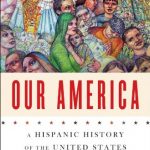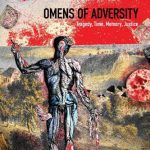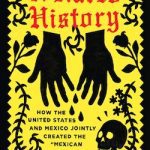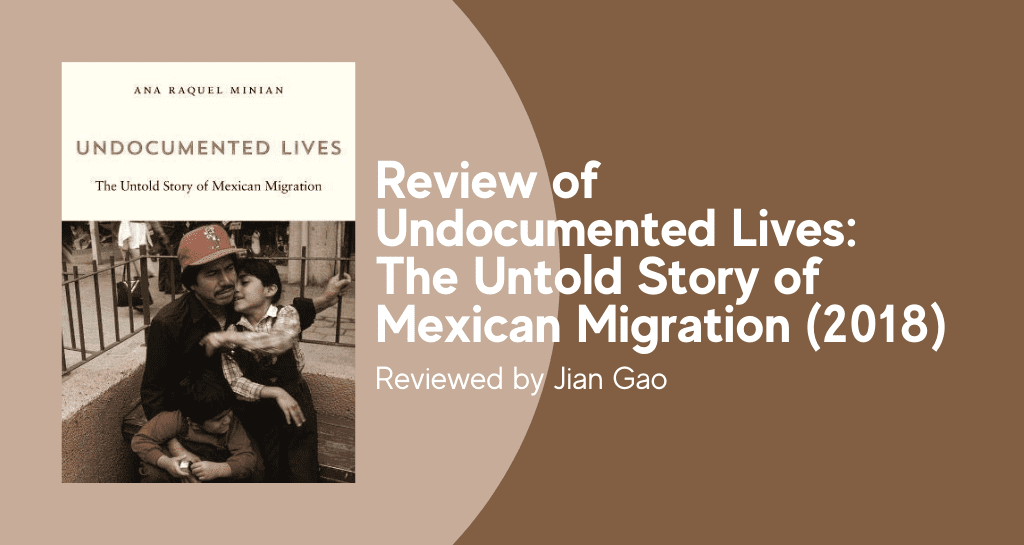
In Undocumented Lives, Ana Raquel Minian explores the inner world of undocumented Mexican migrants in the United States from 1965 to the present. While detailing the harsh realities that these migrants faced, Minian also demonstrates how the migrants’ perceptions of their lives differed significantly from those of the state and how the draconian migration policies of the United States and Mexico were not just detrimental to the interests of the migrants but also of the governments. Foregrounding the voices and the choices of the migrants, Minian argues that while the undocumented Mexicans in the United States maintained transnational connections between the United States and Mexico, they were unable to claim full belonging in either place. By displaying the subjectivity of the undocumented lives, Minian challenges the dominant rhetoric in the present day that often characterizes migrants as agentless people who are completely subjugated by the power of the nation-state without their own sets of priorities, sense of belonging, emotionality, and other elements that are fundamental of being human.
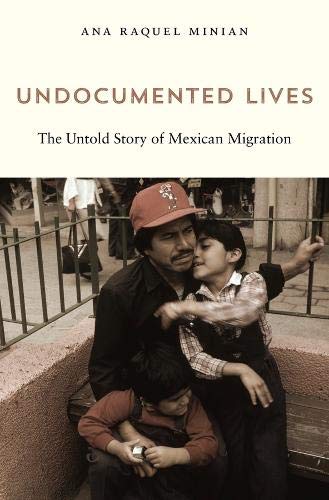
By foregrounding the perspectives of undocumented migrants, Minian contests common stereotypes. She shows that most Mexican migrants simply wanted to look for work in the United States and were not drug dealers. They did not gain social benefits from the U.S. government and instead created their own transnational welfare system that supported their communities in Mexico. Women preferred to stay in Mexico and raise children rather than giving birth in the United States to produce anchor babies. Gay men also preferred to stay in the more conservative Mexico rather than moving to the more liberal United States.
Perhaps the most significant myth that Minian debunked was that undocumented migrants had a fixed place where they could call home. Although many believe that Mexican migrants had full substantive citizenship in Mexico, making their migration to the United States unnecessary, such an assumption, as Minian shows, is far from the truth. In Mexico, the poor economy damaged these migrants, depriving them of reasonable livelihood and making emigration the only viable option for them to survive. Meanwhile, the Mexican government did not treat these migrants as full citizens and instead considered them to be superfluous to the country. Following such logic, Mexican officials believed that out migration could alleviate the pressure of domestic unemployment as these “extras” departed Mexico and competed in the U.S. job market. Therefore, while the undocumented migrants encountered discrimination in the United States as “illegal aliens,” they also faced marginalization in the country of their citizenship and were unable to establish roots in their communities in Mexico.
Minian further shows that without attending to the motivation and the reality of the Mexican migrants, the U.S. government devised and implemented faulty immigration policies that were detrimental to both the migrants as well as its own interests. Minian points out that Mexican migrants frequently engaged in circular migration to maintain their transnational belonging. Therefore, their movement between Mexico and the United States was frequent and few wanted to stay in the United States permanently. However, because policymakers failed to understand such migration pattern, not only did they formulate laws that created excessive hardships for the migrants and their families, but they also, ironically, harmed the interest of the U.S. government. Between 1965 and 1986, the U.S. government legislated multiple immigration laws that aimed to reduce the number of undocumented migrants within the United States. However, these laws, by the hardening of the U.S.-Mexico borders, actually increased the number of “illegal aliens” as the Mexicans ceased to circularly migrate because they were afraid of being detained and deported at the borders.
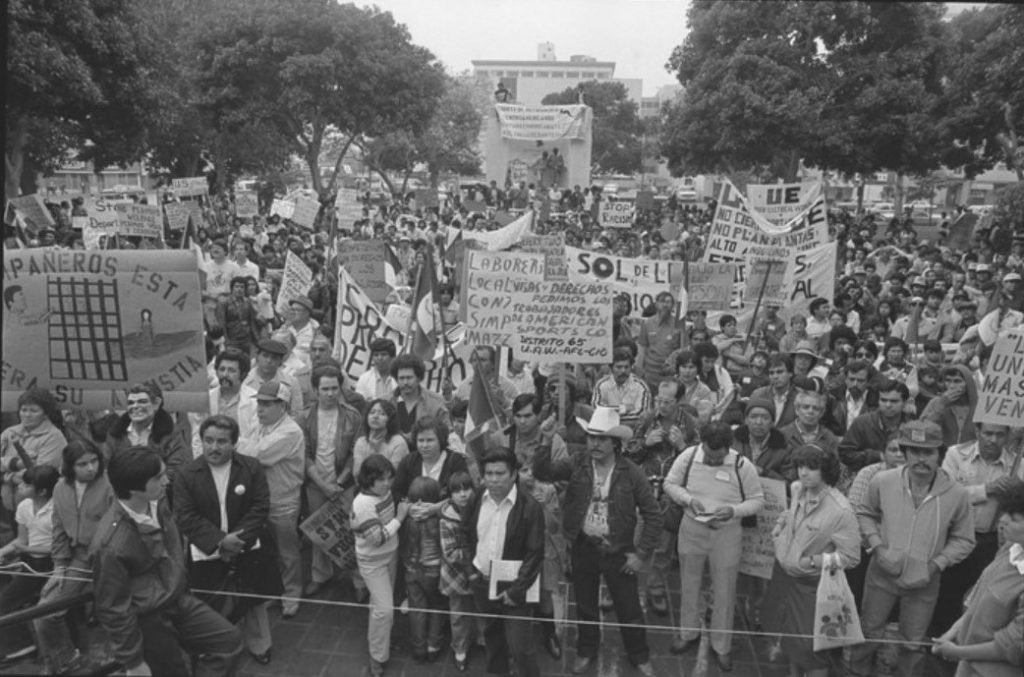
Source: UCLA Charles E. Young Research Library Department of Special Collections
Despite encountering severe discriminations in the United States, national unbelonging in Mexico, and the local pressure to exit, Mexican migrants challenged their marginal status in all three spaces. In the United States, these undocumented people fought for their rights and protested their “illegal alien status” with help from various organizations. Meanwhile, they demonstrated their importance to the Mexican economy by funding welfares in their hometowns. While physically distant from their families, they preserved their transnational households through letter writing, photo exchanging, and circular migration. By asserting their rights and presence, these migrants maintained partial belonging to the United States, Mexico, and their local communities.
Minian’s work points to the importance of using oral historical interviews to uncover the stories of those whose voices that are so often absent in the archives. To present the history of undocumented migrants from their own perspectives, Minian discovered and examined privately held documents including letters, photographs, and pamphlets. By using these personal/family documents, Minian successfully foregrounded the perspectives of the migrants. She also supplemented her research with an impressive 250 oral historical interviews with the migrants and their families. While oral history can be problematic as the interviewee might withhold, distort, or simply forget certain information, Minian mitigated such issue by distilling the broader patterns within these accounts rather than focusing on any single story. A collective experience narrated from the migrants’ perspectives therefore emerged. Undoubtedly, these methods are useful for future historians looking to incorporate the voices of the marginalized in their studies. Overall, insightful and groundbreaking, Undocumented Lives will appeal to scholars interested in migration studies, borderlands history, and Mexican American studies.
Jian Gao is a third-year PhD student at UT Austin. His primary research focuses on the transnational history of Chinese in Mexico during the first half of the twentieth century, and his secondary research focuses on the global dynamics of Latin America during the Cold War era. His works have appeared in The Latin Americanist, Asian Journal of Latin American Studies, The International Report on Drug Studies, and most recently History Compass. His papers have won multiple awards from Latin American Studies Association (LASA), Rocky Mountain Council on Latin American Studies (RMCLAS), Southeastern Council of Latin American Studies (SECOLAS), and the World History Association (WHA).
The views and opinions expressed in this article or video are those of the individual author(s) or presenter(s) and do not necessarily reflect the policy or views of the editors at Not Even Past, the UT Department of History, the University of Texas at Austin, or the UT System Board of Regents. Not Even Past is an online public history magazine rather than a peer-reviewed academic journal. While we make efforts to ensure that factual information in articles was obtained from reliable sources, Not Even Past is not responsible for any errors or omissions.
